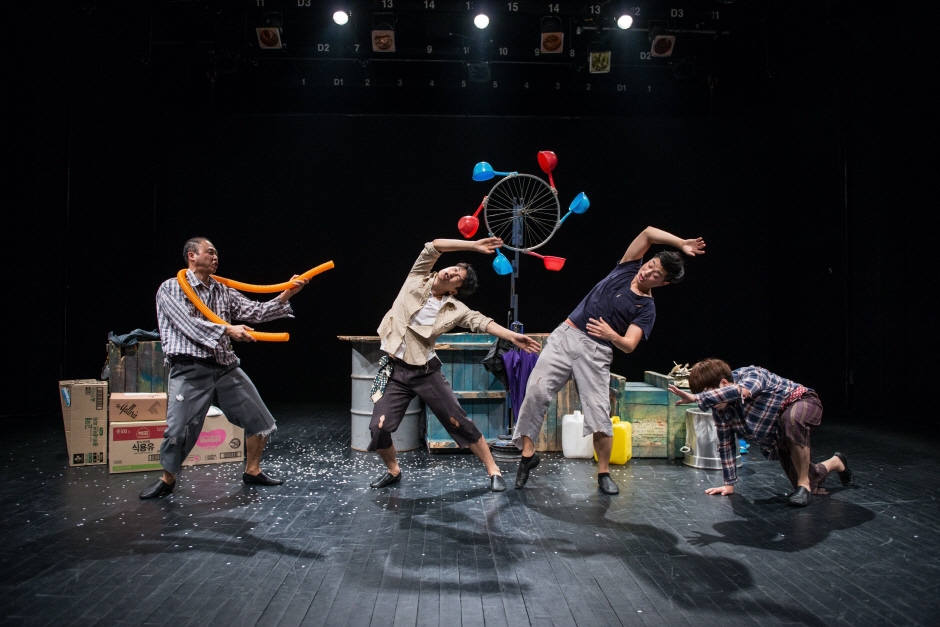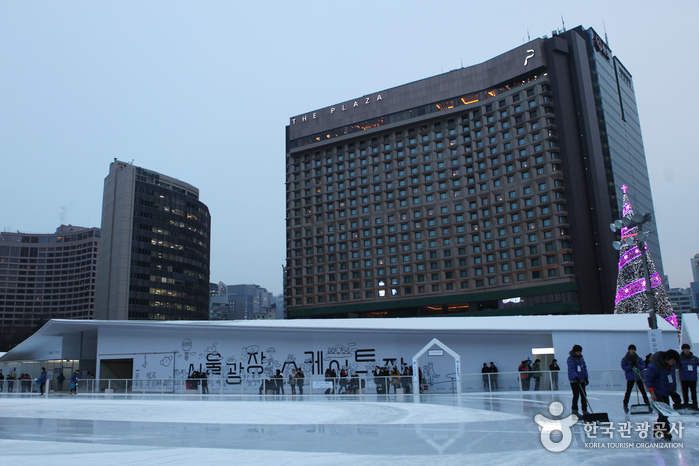D. Festa: Daehakro Street Performance Festival (대학로 거리공연축제)
7.1Km 2025-06-16
1, Daehak-ro 8-gil, Jongno-gu, Seoul
• 1330 Travel Hotline: +82-2-1330 (Korean, English, Japanese, Chinese) • For more info: +82-2-741-4188
Started in 2015, Daehakro Street Performance Festival provides various performances including plays, dances, mimes and more. The festival aims to provide hope and changes in daily life through diverse performances.
Seoul Plaza Ice Skating Rink (서울광장 스케이트장)
7.1Km 2020-04-02
110, Sejong-daero, Jung-gu, Seoul
+82-2133-2691
Seoul Plaza was established in 2004, and is located by Seoul City Hall. The plaza is shaped like the full moon. Seoul Plaza hosts a wide array of cultural events including concerts and exhibitions for residents and visitors. The plaza transforms into an outdoor skating rink every winter, a popular attraction in the city.
The facility houses one rink for beginners and one for advanced skaters, and also hosts various events during its operating hours. There are also convenient facilities like skate rental, outdoor rest area, and outdoor standing area for ice skaters and spectators.
Ice skaters at the rink must wear gloves, and the plaza also offers a training program to teach interested individuals how to have fun while skating safely. To learn how to skate, visit the website to register for a training session in advance.
Hyeopjin Computer [Tax Refund Shop] (협진컴퓨터)
7.1Km 2024-04-23
3F, 74, Cheongpa-ro, Yongsan-gu, Seoul
-
Audio Park - Yongsan ETLand Branch [Tax Refund Shop] (오디오파크 용산전자랜드)
7.1Km 2024-04-22
74, Cheongpa-ro, Yongsan-gu, Seoul
-
Choi Com - Yongsan ETLand Branch [Tax Refund Shop] (초이컴 용산전자랜드)
7.1Km 2024-04-18
Store #A-335, 3F, ET LAND (Main Bldg.), 74, Cheongpa-ro, Yongsan-gu, Seoul
-



![HB Coms [Tax Refund Shop] (에이치비컴즈)](http://tong.visitkorea.or.kr/cms/resource/94/2891194_image2_1.jpg)
![Sjkcnc [Tax Refund Shop] (에스제이케이씨엔씨)](http://tong.visitkorea.or.kr/cms/resource/96/2891196_image2_1.jpg)
![Hyeopjin Computer [Tax Refund Shop] (협진컴퓨터)](http://tong.visitkorea.or.kr/cms/resource/04/2891204_image2_1.jpg)
![Old and New [Tax Refund Shop] (올드앤뉴)](http://tong.visitkorea.or.kr/cms/resource/10/2891210_image2_1.jpg)
![Banwol Audio [Tax Refund Shop] (반월음향)](http://tong.visitkorea.or.kr/cms/resource/18/2891218_image2_1.jpg)
![Audio Park - Yongsan ETLand Branch [Tax Refund Shop] (오디오파크 용산전자랜드)](http://tong.visitkorea.or.kr/cms/resource/92/2878492_image2_1.jpg)
![Choi Com - Yongsan ETLand Branch [Tax Refund Shop] (초이컴 용산전자랜드)](http://tong.visitkorea.or.kr/cms/resource/00/2878500_image2_1.jpg)
 English
English
 한국어
한국어 日本語
日本語 中文(简体)
中文(简体) Deutsch
Deutsch Français
Français Español
Español Русский
Русский